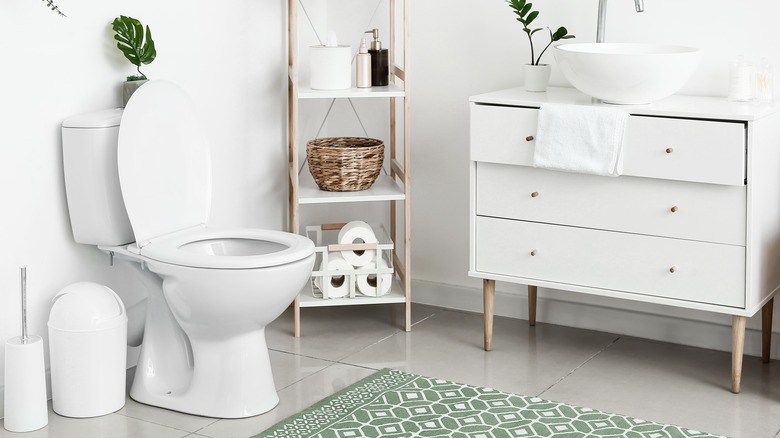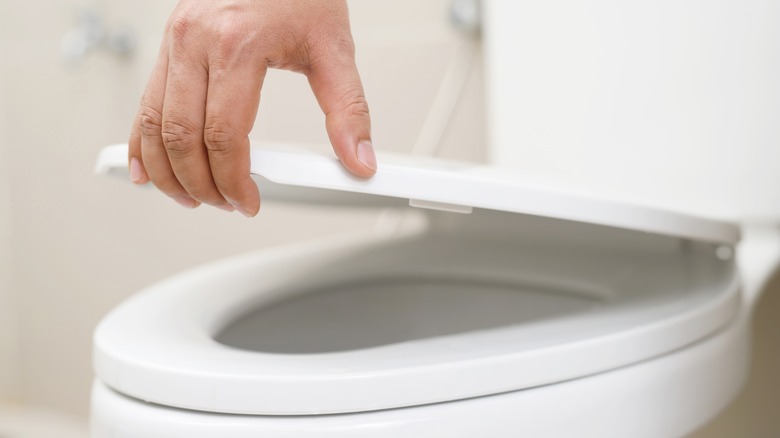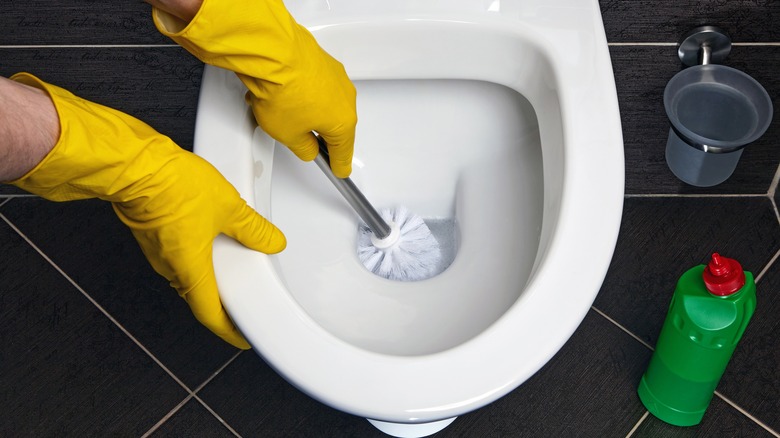The Common Toilet Mistake You're Likely Making Every Time You Flush
Let's be honest. At some point in our lives, we've probably all flushed something down the toilet that we shouldn't have. Maybe it was too much toilet paper, a giant wad of gum, or paper towels. These items can clog the toilet or pipes, but flushing things you shouldn't isn't the only toilet mistake people make. Leaving the lid open when you flush can also be a mistake. In fact, some people rarely close their toilet lid except on cleaning days.
Have you ever flushed a toilet with such strong water pressure that you saw the water splash out everywhere? Or perhaps you've noticed water droplets on the seat of a public toilet or on the floor, knowing they were from the previous flush. Pretty gross, huh? Although there are worse things to find on a toilet seat, toilet water still isn't exactly harmless. Keeping the lid closed can reduce the amount of "splash" that follows a toilet flush, while cleaning your toilet and bathroom regularly can help prevent the spread of infectious pathogens from toilet water.
Toilet water can travel more than 2 feet
Those germy, microscopic water droplets that spray everywhere after a toilet is flushed are known as toilet plume aerosol (via Aerosol Science Technology), or aerosol plume. Dental Health Colorado shared an experiment on YouTube using a residential toilet to determine just how far water droplets, big and small, can travel after flushing. The experimenter poured ultraviolet liquid in the toilet, allowing the larger splashed water droplets to be easily visible under black light after flushing.
How far did the large water droplets travel? About 2 feet away from the toilet. The microscopic aerosolized droplets traveled even farther — three times farther, to be specific. This means they can easily come in contact with anything on the bathroom counter, including your toothbrush. Yuck! The plumes also hovered in the air for over an hour.
In addition to urine and feces, aerosol plumes can contain airborne infectious diseases, including norovirus and coronavirus (via American Journal of Infection Control). What's worse is that these pathogens can survive on the floor, toilet seat, counter, and other surfaces for months. With that in mind, there's one additional step you should take if you want to more effectively prevent the spread of germs from your toilet.
Clean your toilet and bathroom with a disinfectant regularly
How often do you clean your toilet? Hopefully at least once a week, as Lysol and other sources recommend. Some people clean it more often, which is a great idea if multiple people use the same toilet throughout the week. According to University of Oklahoma Health Sciences Center professor Evan Floyd, closing the lid can reduce the overall amount of sprayed pathogens. However, the aerosol plumes can still escape through the gap between the lid and the seat (via Inverse).
This is why it's so important to scrub your toilet bowl at least once a week, if not more often, using a disinfecting cleaner that kills as many germs as possible. Look for "kills 99.9% of germs" and similar messaging on the product label. Be sure to also disinfect all other areas of the toilet, especially the seat and under the lid, as well as the floor, sink, counter, etc. And just to be on the safe side, you might also want to start leaving your toothbrush elsewhere in your bathroom, like under the sink or in your medicine cabinet. You may also want to leave it in one of those plastic traveling cases.


